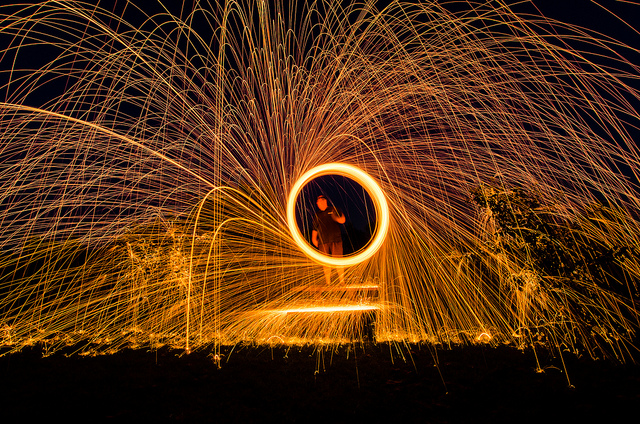Full Circle Innovation
 It’s not enough to sell things to customers, because selling things is transactional and, over time, transactional selling deteriorates into selling on price. And selling on price is a race to the bottom.
It’s not enough to sell things to customers, because selling things is transactional and, over time, transactional selling deteriorates into selling on price. And selling on price is a race to the bottom.
Sales must move from transactional to relational, where people in the sales organization become trusted advisers and then something altogether deeper. At this deeper level of development, the sales people know the business as well as the customer, know where the customer wants to go and provide unique perspective and thoughtful insight. That’s quite a thing for sales, but it’s not enough. Sales must become the conduit that brings the entire company closer to the customer and their their work.
When the customer is trying to figure out what’s next, sales brings in a team of marketing, R&D and manufacturing to triangulate on the future. The objective is to develop deep understanding of the customer’s world. The understanding must go deeper than the what’s. The learning must scrape bottom and get right down to the bedrock why’s.
To get to bedrock, marketing leads learning sessions with the customer. And it all starts by understanding the work. What does the customer do? Why is it done that way? What are the most important processes? How did they evolve? Why do they flow the way they do? These aren’t high-level questions, they are low-level, specific questions, done in front of the actual work.
The mantra – Go to the work.
When the learning sessions are done well, marketing includes experts in manufacturing and R&D. Manufacturing brings their expertise in understanding process and R&D brings their expertise in products and technologies. And to understand the work the deepest way, the tool of choice is the Value Stream Map (VSM).
Cross-organization teams are formed (customer, sales, marketing, manufacturing, and R&D) and are sent out to create Value Steam Maps of the most important processes. (Each team is supported by a VSM expert.) Once the maps are made, all the teams come back together to review the them and identify the fundamental constraints and how to overcome them. The solutions are not limited to new product offerings, rather the solutions could be training, process changes, policy changes, organizational changes or business model changes.
Not all the problems are solved in the moment. After the low hanging fruit is picked, the real work begins. After returning home, marketing and R&D work together to formulate emergent needs and create new ways to meet them. The tool of choice is the IBE (Innovation Burst Event).
To prepare for the IBE, marketing and R&D formalize emergent needs and create Design Challenges to focus the IBE teams. Solving the Design Challenges breaks the conflicts creates novel solutions that meet the unmet needs. In this way, the IBE is a pull process – customer needs create the pull for a solution.
The IBE is a one or two-day event where teams solve the Design Challenges by building conceptual prototypes (thinking prototypes). Then, they vote on the most interesting concepts and create a build plan (who, what, when). The objective of the build plan is to create a Diabolically Simple Prototype (DSP), a functional prototype that demonstrates the new functionality. What makes it diabolical is quick build time. At the end of the IBE is a report out of the build plan to the leader who can allocate the resources to execute it.
In a closed-loop way, once the DSP is built, sales arranges another visit to the customer to demonstrate the new solution. And because the prototype designed to fulfill the validated customer need, by definition, the prototype will be valuable to the customer.
This full circle process has several novel elements, but the magic is in the framework that brings everyone together. With the process, two companies can work together effectively to achieve shared business objectives. And, because the process brings together multiple functions and their unique perspectives, the solutions are well-thought-out and grounded in the diversity of the collective.
Image credit – Gerry Machen
 Mike Shipulski
Mike Shipulski